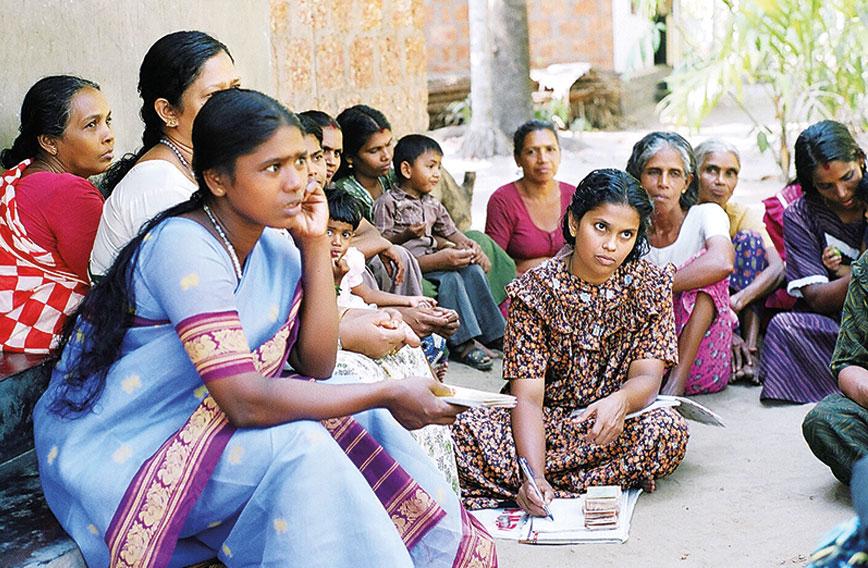
RATNA VISHWANATHAN
the bane of microfinance in India has been the perception of it being an exploitative business, one that charges usurious rates of interest from poor borrowers. From an optics perspective, it is a disastrous positioning of borrowers from low-income households and ‘for profit’ microfinance institutions (MFIs).
Right from the inception of microcredit entities, there has been strong criticism of high interest rates charged by MFIs. In recent years, this criticism has intensified. The common perception is that the unfortunate combination of profit-seeking MFIs, minimal competition and vulnerable borrowers has thrown up dangerous potential for exploiting the poor.
This is actually far from the truth. Today, with multiple entities lending to the same borrower base, there is a sizeable amount of competition that MFIs face. While MFIs are stringently regulated by the Reserve Bank of India (RBI) in terms of the lending framework — including size of loan, rates of interest, tenure of loan — and are banned from taking deposits, other entities such as banks, NBFCs (Non-Banking Financial Companies), and Section 8 companies lending to the microfinance sector do not have such restrictions. So we are in a peculiar situation where the MFIs take the rap for over-leveraging their borrowers but all kinds of entities are lending to the sector.
Perception is a key driver. All of us are aware of the oft-repeated line that perception equals reality. The MFI sector is never allowed to forget that once upon a time there was a state called Andhra Pradesh and a crisis happened there. I think there’s a need to step back and understand why the NBFC-MFI sector exists as an entity. The population to which they provide credit comprises women, from low-income households, and all of them are provided unsecured loans. Until recently, banks did not lend to this sector because it involved low-value, high-volume transactions which meant a heavy administrative load for the banks. The unmet need for credit was what prompted MFIs to move into this space.
There are arguments that say they did so because they derived the benefits of priority sector lending. Despite this, banks still lend to them at high rates of interest. The MFI borrows from commercial banks at rates ranging from 13 percent to over 18 percent. To hedge against the fact that they provide unsecured loans, MFIs put up cash collaterals to the bank so that the latter’s interests are protected.
This is interesting since both entities are regulated by the same regulator. Ironically, the MFI sector has traditionally demonstrated NPAs of under one percent. And we all know where banks in India stand today regarding NPAs. It seems the poor value their credit more and understand the discipline of repaying their loans more than institutions and High Net Worth Individuals. Despite this, India has one of the lowest rates of interest for microfinance loans, compared to other countries.
People I meet are all uniform in their opinion that MFIs charge usurious rates of interest. They say, whereas we can get a personal loan at 12 percent, MFIs lend at 26 percent. The understanding of this lies in the high cost of funds for the sector. The RBI permits a margin for MFIs of cost of funds plus 10 percent or 2.75 times the base rate of the five largest commercial banks based on asset size, which is revised every quarter, whichever is lower. With this formula, MFIs do not often derive the benefit of the full 10 percent. Within that 10 percent, they cover all operational costs and other expenses and have very slim profit margins which range between one to one-and-a-half percent. Unlike other financial service institutions, they are not permitted to take deposits by the RBI.
So, in effect, they end up with a fragile single-product model. Despite this, as of date, 80 percent of the industry is lending at 24 percent or less. Compare this to other entities which have started lending in this space today. Other institutions, such as banks, NBFCs, and Section 8 companies all provide credit to the same set of borrowers. With lower cost of funds, especially in the case of banks, where it is 6 or 7 percent, they still lend at 26 percent. Unlike MFIs, they have the benefit of a suite of products and this is portfolio diversification, not mainline business. But these facts are not commonly known. Hence the NBFC-MFI becomes the poster child for high interest rates.
There needs to be recognition of this fact, particularly in an environment where the face of the financial services industry is changing fast. Today, banks are keen to acquire MFI businesses because it deepens their outreach with an up and running infrastructure. The essence of microfinance has been its "feet on street’’ model. The people connect is a large part of how this facility operates. But the uncertainty that riddles the sector creates anxiety. Technology, bank accounts and bank outreach do not take away the trepidation that the unlettered microfinance borrower has regarding approaching formalised brick and mortar structures.
The Business Correspondent (BC) of a bank is an agent at best, with barely any personal connect with the borrower. In the circumstances, it is the MFI that bridges that gap of last-mile connectivity for financial inclusion. MFI executives are employees and not agents. Today, the NBFC-MFI sector has two-fold supervision. One at the level of the RBI, and another at the level of the Self Regulating Organisations (SROs) like the Microfinance Institutions Network (MFIN). Its framework is stringently regulated as are its interest rates.
There is a need for the larger body to understand the role and structure of the NBFC-MFI and to acknowledge its presence for the positive role it plays in bringing unsecured credit to vulnerable people. They are no Shylocks and the myth needs to be altered suitably.
Comments
Currently there are no Comments. Be first to write a comment!




